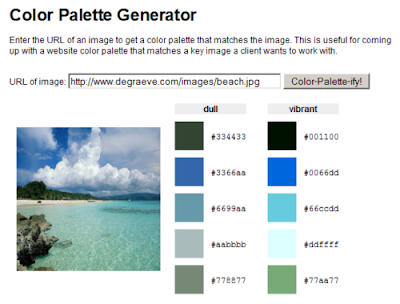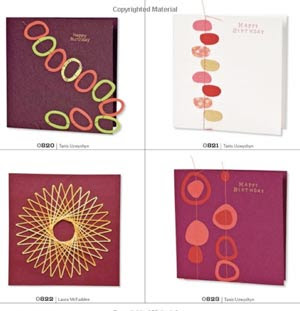Color Palette Generator from jrm.cc

Color Combos

Color Wheel from Colors On The Web

ColorToy 2.0

To see 37 more resources check out this Web Design Booth.




 Don't be put off by the title of the book 1000 Handmade Greetings: creative cards and clever correspondence.
Don't be put off by the title of the book 1000 Handmade Greetings: creative cards and clever correspondence.






InDesign Seminar Tour June 2 – September 10, 2009 – Touring event
Photoshop Lightroom: The Essential Tool June 3 – Nov 8, 2009 – Multiple cities
Digital Workflow, Not Workslow by D-65 June 12 – Dec 14, 2009 – Multiple cities
HOW Design Conference 2009 June 24-27, 2009 – Austin, Texas
Fine Digital Print Advanced June 29 – July 3, 2009 – Cushing, Maine
InDesign CS4 Productivity Tour July 17, 2009 – Los Angeles, CA
Photoshop® Lightroom® 2 LIVE July 20, 2009 – Chicago, IL
Illustrator CS4 Upgrade – What’s New? July 20, 2009 – New York, New York
Location Lighting Techniques July 31, 2009 – South Francisco, CA
Creative Effects with Illustrator CS4 August 13, 2009 – New York, New York

 Here's the beginning of an article on writing greeting freelance from Buzymom's Website.
Here's the beginning of an article on writing greeting freelance from Buzymom's Website.The greeting card market is one of the most profitable and high-paying markets for writers. According to the industry trends, each greeting card verse can earn a writer something in between $50 and $150.
The greeting card genre is different from all other types of writing, hence editors, when buying potential greeting card material look for that personal voice in your verse, where it’s like from ‘me to you’. To elaborate this point, the greeting card writer is that anonymous third voice between two other people, the card sender and the card recipient. The writer is saying for others what they may be unwilling or unable to say for themselves.
It’s a well known fact that editors have different needs for each line of cards. Once that is found out, it’s easy for the writer to thrive at this job. It’s important to know the market here as well as finding information about the company wants will be an added advantage.
In this process there is something that each writer should know about, that is the rack impact. This is basically, how and what you will see in a card rack or spinner on display. Roughly, in these displays each card has about 1.5 seconds to catch a consumer’s eye. If the card is too cryptic, has too many words, is obscure in any way, the buyer will move onto the next card without even picking it up. Every editor has this concept; 'rack impact,' in mind and uses it as a basic criterion for buying a writer's work. So capitalizing on this when designing or writing greeting card verses will help you get the assignment from the company...ARTICLE CONTINUED...
(photo credit Misocrazy)






